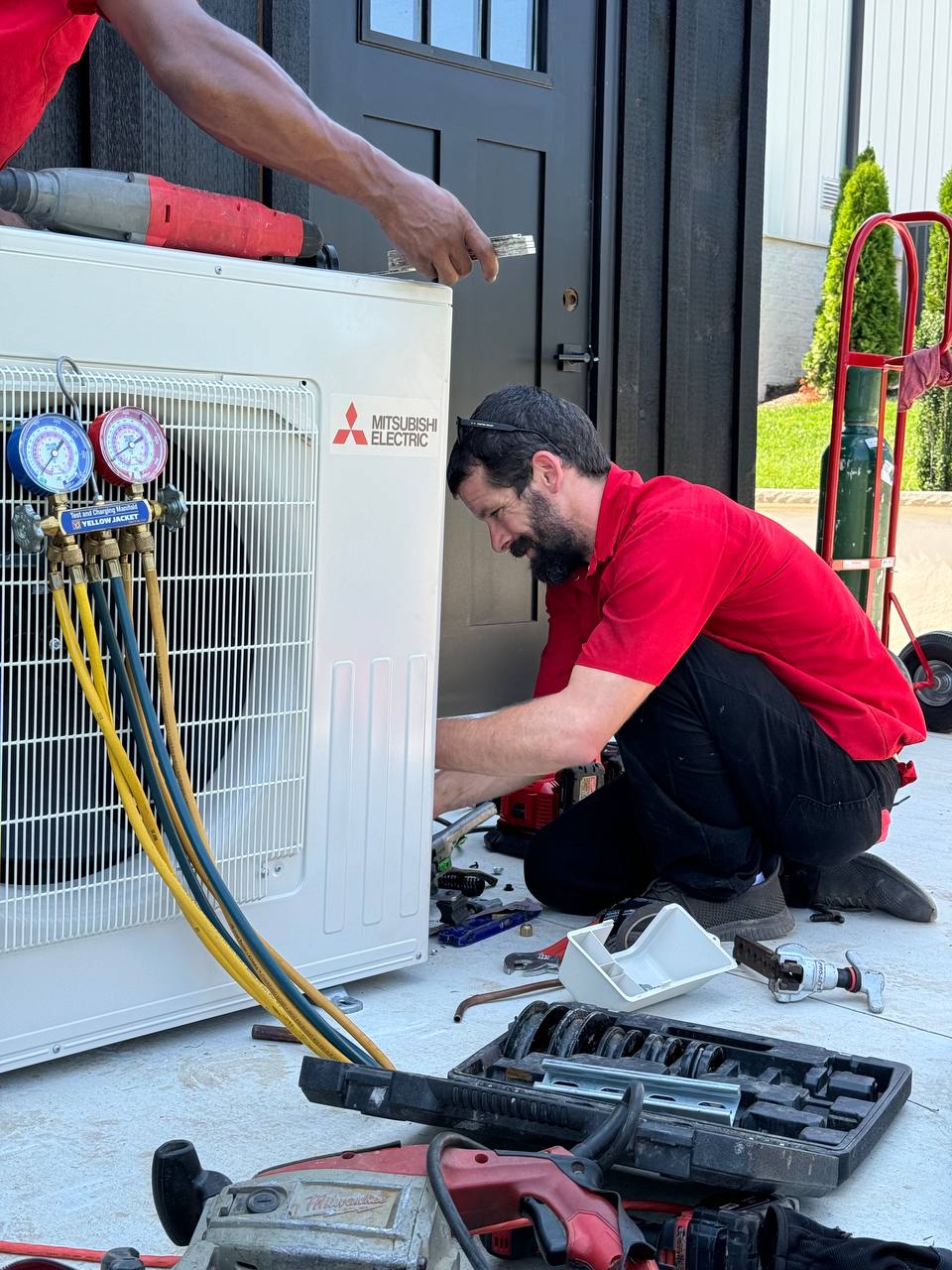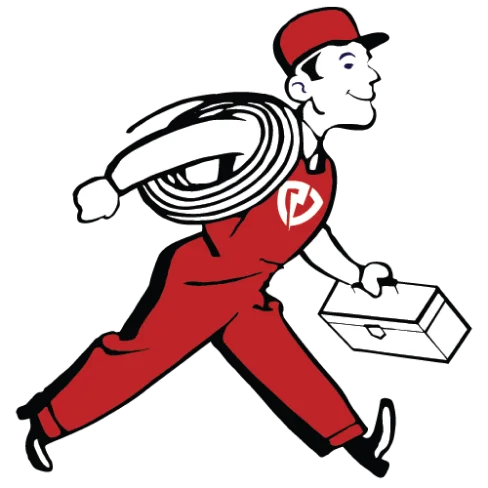Your air conditioning system removes humidity from the air and drains it outside using a small pipe called a condensate drain line. A clogged AC drain line can cause water leakage, mold growth, and damage to the AC unit and surrounding areas of your home. If your AC condensate drain is clogged, you may notice water leaking near your unit, leading to potential water damage. Understanding what causes blockages in the drain line helps homeowners take preventive measures and avoid expensive repairs or potential AC breakdowns.
How Does The AC Condensate Drain Line Work?
When the AC runs, it cools the air, causing moisture to condense and collect in a drain pan below the evaporator coil. The collected water flows through a connected drain line, directing the moisture outside the house, preventing water damage or excessive humidity indoors.
If the drain line gets blocked, the accumulated water has nowhere to go and starts backing up into the drain pan inside. If you notice water pooling around your unit, a clogged AC drain line could be the culprit behind the issue.
Common Causes Of A Clogged AC Drain Line Condensate
1. Accumulation Of Dust, Dirt, And Debris
The AC system constantly circulates air, pulling in dust, dirt, and airborne particles that settle inside the drain line over time. This buildup gradually blocks the passage, preventing the condensed water from draining out properly, leading to leaks and potential system damage.
2. Mold And Algae Growth Inside The Drain Line
Dark, damp conditions inside the AC drain line provide an ideal environment for mold, mildew, and algae to grow and spread easily. These biological contaminants thrive in the moisture, creating thick blockages that restrict water flow and cause system inefficiency.
3. Incorrect AC Installation Or Poorly Designed Drainage System
If the AC drain line is installed incorrectly, it may have improper slopes, low spots, or bends that encourage water stagnation inside. Poorly designed drainage systems create unnecessary resistance, making it easier for dirt and biological growth to accumulate inside the pipeline.
4. Rust Or Corrosion Inside The Drain Pan Or Pipe
Over time, metal drain pans and pipes can develop rust or corrosion due to prolonged exposure to moisture and condensation. Rust particles break off and mix with the water, accumulating inside the drain line and causing stubborn clogs that are difficult to remove.
5. Pest Infestation Inside The Drain Line Opening
Small insects, rodents, or other pests often find their way into the open end of the AC drain pipe and create blockages. Nests, dead insects, or debris from pests can obstruct the pipe, stopping the normal flow of condensation drainage outside.
Also Read: 4 warning signs your air conditioner needs repair
Signs That Your AC Drain Line Is Clogged
1. Water Leakage Around The Indoor AC Unit
A noticeable puddle of water around your indoor unit indicates a blocked drain line that prevents proper drainage of condensation water.
2. Increased Indoor Humidity And Musty Odors
Excess moisture inside your home, along with musty odors, suggests that the drain line is clogged and unable to remove condensation properly.
3. AC System Suddenly Shuts Down Unexpectedly
Modern AC units have safety sensors that automatically turn off the system if a clogged drain line causes water backup problems.
4. Visible Mold Or Algae Growth Near The Drain Line
If you notice mold or algae buildup around the AC drain line opening, it could indicate an underlying blockage affecting drainage performance.
The best method for AC drain line cleaning is flushing it with a vinegar or bleach solution to remove bacteria and debris.
Also Read: The Frustration of Failing Air Conditioners: What to Do When Your AC Stops Cooling
How To Prevent AC Drain Line Clogs With Regular Maintenance
1. Perform Routine AC Drain Line Cleaning Every Few Months
Flushing the drain line with a mixture of white vinegar and water helps eliminate bacteria, mold, and debris that cause blockages.
2. Install A Drain Line Cleanout Or Access Point
Having an easily accessible cleanout fitting allows homeowners and technicians to inspect and clean the AC drain line more efficiently and effectively.
3. Use Algaecide Tablets To Prevent Mold Growth
Dropping algaecide tablets inside the drain pan helps prevent the formation of mold, algae, and slime buildup within the drain system.
4. Schedule Professional AC Maintenance And Inspection Annually
A professional HVAC technician can inspect, clean, and ensure that your AC drain line functions efficiently, preventing costly breakdowns and water damage.
5. Keep The AC Filter Clean To Reduce Dust Accumulation
Replacing or cleaning the air filter regularly helps prevent excess dirt and dust from reaching the AC system and drain line area.
Homeowners should inspect their unit frequently to catch a clogged AC drain line before it leads to expensive repairs.
How to unclog AC drain lines?
To unclog an AC drain line, start by turning off the air conditioner to prevent further water damage. Locate the drain line, usually near the indoor unit, and inspect it for visible blockages. Use a wet/dry vacuum to suction out debris or flush the line with a mixture of vinegar and warm water to dissolve mold and algae buildup. If the clog persists, a flexible plumber’s snake or compressed air can help dislodge stubborn blockages. Regular maintenance, such as monthly flushing with vinegar, prevents future clogs and ensures efficient drainage, keeping your AC system running smoothly.
Conclusion
A clogged AC drain line can cause significant problems, including water damage, increased humidity, and system inefficiency if left untreated. Regular AC drain line cleaning ensures that moisture drains properly, preventing blockages and maintaining your air conditioning system’s efficiency and longevity.
By understanding the causes and taking preventive measures, homeowners can avoid costly repairs and keep their AC systems running smoothly year-round.Stop AC Drain Line Clogs Before They Cause Damage! Learn How to Clean and Maintain Your AC Drain Line to prevent costly repairs and system breakdowns today! Call us now.


